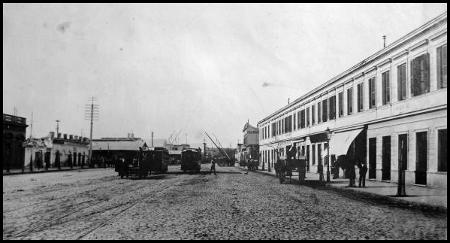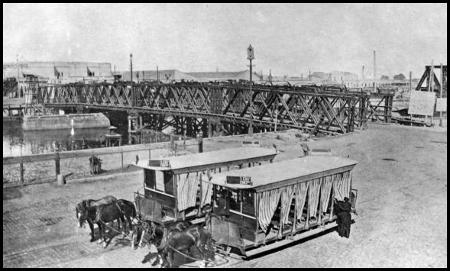By
Barracas, the neighborhood of Tres Esquinas

his neighborhood owes its name to the ancient barracks which, in late eighteenth century, started to be installed on the left bank of the Riachuelo. They were rudimentary constructions that stored hides, wool, cereals and other products that came or went out of the city. Some historians state that those barracks were the first place where the slaves brought to the Río de la Plata area were accommodated.
From the time of the government of Juan Manuel de Rosas until late nineteenth century, Barracas was the dwelling place of the wealthy families who lived in luxurious mansions and spent their summers at villas that bordered Santa Lucía Avenue (later Calle Larga and, much later, Montes de Oca Avenue), main link between the town center and the Riachuelo. During that period the neighborhood became very important and in 1833 bullfights were held to honor Rosas.

The epidemic of yellow fever, that broke out late that century and which was brought by the troops that came back from the front of the War of the Triple Alliance, forced those families to move to the northern area of the city.
Years later, waves of immigrants (mainly Galicians, Cantabrians, Genoese and Sephardic Jews) arrived, which added to the establishment of factories, turned that area into an industrial neighborhood for the working class.
It is the neighborhood mentioned by Leopoldo Marechal in his book Adán Buenosayres and by Ernesto Sabato in Sobre héroes y tumbas.It was the cradle of the payadores César Cantón and Félix Hidalgo, and of Ángel Villoldo, composer of the tangos “El choclo”, “La morocha” and “Cuidado con los 50”.
Several tangos take place in Barracas:
Viejo café de Barracas,
turbios recuerdos de entonces,
que allá por el año once
tenía entreveros de facas…
Hoy has cambiado tu pinta,
todo es nostalgia y neblina,
ya no es muchachos de esquina
la del Café El Pasatiempo,
cuando tocaba en sus tiempos
el Tigre del Bandoneón…
“Café de Barracas” (by Enrique Cadícamo)

Yo soy del barrio de Tres Esquinas,
viejo baluarte de un arrabal
donde florecen como glicinas
las lindas pibas de delantal.
“Tres esquinas” (by Enrique Cadícamo)
The Tres Esquinas (Three Street Corners) are formed by the crossing of Osvaldo Cruz Street (previously called Tres Esquinas) and Montes de Oca Avenue. In the intersection of Osvaldo Cruz with the streets Vieytes and Herrera there was a railroad station called Tres Esquinas meant for freight trains which joined the railway coming from Plaza Constitución.
It is worth mentioning that many tangos speak about Barracas al Sur. That was the name given then to the present city of Avellaneda and, by extension, to the district that occupied the southern bank of the Riachuelo, which today belongs to the districts of Avellaneda and Lanús, which in 1944 split with the original district of Barracas al Sur.
Una calle en Barracas al Sur,
una noche de verano,
cuando el cielo es más azul
y más dulzón el canto del barco italiano…
“Silbando” (by José González Castillo)
Bailarín compadrito,
que floreaste tu corte primero,
en el viejo bailongo orillero
de Barracas al Sur…
“Bailarín compadrito” (by Miguel Bucino)